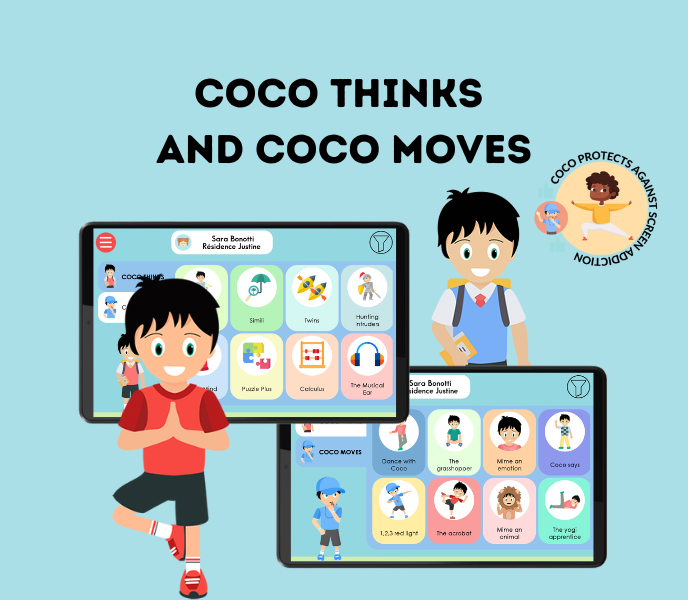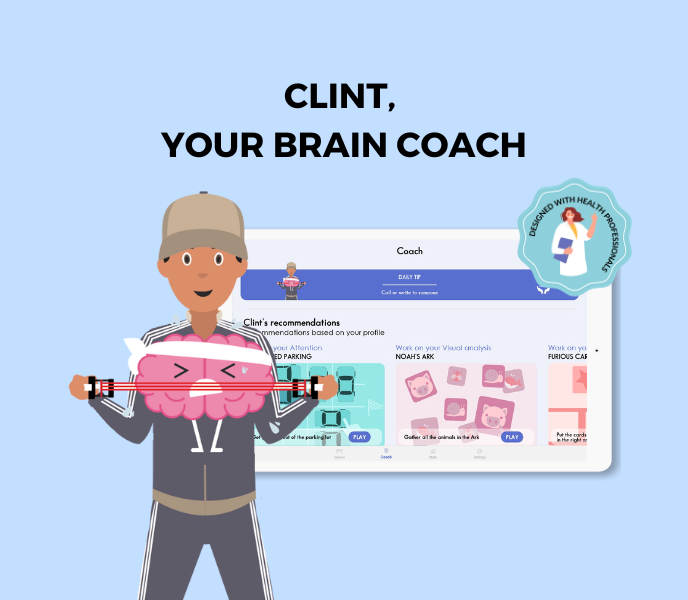Excessive screen use can have many negative consequences for children’s health. On a physical level, this can lead to excessive sedentariness, weight gain, sleep problems musculoskeletal disorders… Children who spend too much time in front of screens also tend to eat less healthily, skip meals and snack more.
Mentally, excessive screen use can lead to problems of concentration, attention and learning. Children who spend a lot of time in front of screens also tend to be more anxious and have behavioral problems. What’s more, exposure to inappropriate or violent content can have a negative impact on children’s emotional development.
Determining optimal screen time for children
It’s crucial to consider the appropriate amount of screen time for children, depending on their age and stage of development. Guidelines fluctuate, but generally, it’s recommended to limit screen time to one hour a day for preschoolers and two hours a day for school-age children; This approach aims to ensure a balanced use of screens, while promoting the healthy development of children.
Alongside duration, screen content is of crucial importance. For example, spending time watching educational programs can be more beneficial than playing video games. So finding the right balance between different types of screen-based activities is essential to providing an enriching digital experience while meeting children’s educational and recreational needs. By integrating these principles into family habits, parents can play a crucial role in promoting healthy, balanced screen use for their children.
The impact of different types of screens on children’s health
Different types of screen can have distinct effects on children’s health, raising specific concerns. For example, close-up television viewing can potentially contribute to vision problems such as eyestrain or myopia, due to the proximity of the screen and the prolonged time spent in front of it. Similarly, excessive use of mobile devices, such as smartphones or tablets, can disrupt children’s sleep due to exposure to blue light from screens, which can inhibit the production of melatonin, an essential sleep-regulating hormone. It is therefore crucial to take into account the various potential impacts of screens on children’s health and to put in place strategies to minimize the risks associated with their use.
It’s crucial to restrict exposure to screens before bedtime, as the blue light emitted can interfere with the production of melatonin, essential for regulating sleep. In addition, it’s advisable to take regular breaks when using screens to prevent eye strain and musculoskeletal problems associated with prolonged posture in front of the devices. By adopting these preventive measures, parents can foster an environment conducive to their children’s sleep and eye health, while minimizing potential risks to their overall well-being.
Limiting screen time for children
Reducing children’s screen time can be achieved through a variety of strategies. The first is to set clear, consistent limits on screen use. For example, it may be decided that children are not allowed to use screens during meals or before going to bed. This approach helps create quality family time and promotes better quality sleep. Secondly, it’s important to offer attractive alternatives to screens. Encouraging children to engage in outdoor activities, read books, play sports or participate in artistic pursuits can keep them entertained while stimulating their development. Finding activities that captivate children’s interest is essential to keeping them engaged. In addition, involving children in the process of defining rules concerning screen use can reinforce their adherence to these limits. By establishing open communication and explaining the reasons behind these rules, parents can encourage more responsible screen use in their children. Finally, it’s important to set an example by adopting healthy screen habits as an adult. By setting an example and practicing the same rules, parents can positively influence their children’s screen behavior.
Offering alternative activities to screens is just as crucial. Encouraging children to play outdoors, read, play sports or take part in artistic activities can be very beneficial. Finding activities that captivate children’s interest and keep them engaged is essential. By offering a variety of options, parents can cater to their children’s different interests and preferences. Encouraging activities that stimulate their creativity, imagination and physical development contributes to balanced growth. By integrating these alternatives into their daily lives, children can discover new horizons and develop their full potential.
Alternatives to screens for children’s entertainment
There are plenty of alternatives to screens for entertaining children and stimulating their imagination. Organizing family board games is an opportunity to create memories and strengthen family ties around a fun, interactive activity. What’s more, outdoor activities allow children to discover nature, thrive in a different environment and expend their energy in a healthy way. Building huts or gardening are practical activities that encourage children to develop their manual skills and creativity. In addition, artistic activities such as painting, drawing or sculpting provide a space where children can let their imagination run free and explore new forms of expression. By encouraging these alternatives, parents can offer their children enriching experiences that balance entertainment with personal and social development.
It’s important to encourage children to explore different types of activities and find the ones they’re passionate about. This can help them develop their social skills, creativity and imagination.
Rules for healthy screen use

Setting clear rules for healthy screen use is essential in today’s digital world. By limiting access to screens at mealtimes and before bedtime, and by setting specific time limits, parents can promote quality family time and encourage diversification of activities. What’s more, carefully monitoring the content to which children are exposed, choosing age-appropriate programs and games, helps ensure an educational and enriching digital experience. Regular discussions about the content viewed or used also provide an opportunity to teach critical thinking and media discernment, while strengthening the parent/child bond.
In this digital environment, educational applications such as COCO MOVES & COCO THINKS can complement this approach by offering fun and educational activities. In this way, parents can play an active role in promoting responsible screen use, while providing their children with the tools they need to navigate the modern digital world in an enlightened way.
Involve children in developing a balanced screen use plan
Involving children in the development of a balanced screen use plan is essential. This helps them understand the importance of limiting screen time and feel responsible for their own use. By participating in this process, children can express their needs and concerns about screen use. They may also be more inclined to respect the rules they have helped to establish. This involvement fosters open dialogue and builds trust between parents and children, and offers parents the opportunity to teach children important time-management and decision-making skills. By working together on this plan, the family can create a healthy, balanced environment for screen use.
You can discuss with them the pros and cons of screen use, explain the recommendations on screen time, and ask their opinion on the rules to be put in place. This can also be an opportunity to discuss their interests and find alternative activities that interest them.
Make the use of screens more educational and interactive
Making the use of screens more educational and interactive is an essential approach in our digital age. This means carefully selecting programs and games to encourage learning and active engagement. For example, the use of educational applications such as COCO MOVES & COCO THINKS can be extremely beneficial. These applications offer a playful environment where children can learn while having fun. With COCO MOVES, children can take part in physical activities while developing their cognitive skills and learning new concepts. On the other hand, COCO THINKS offers thinking games and challenges that stimulate logic and problem-solving.
By watching programs or films as a family, it’s possible to passively transform screen time into an interactive and enriching experience. By discussing content together, parents can help their children develop critical thinking skills and a better understanding of what they see. For example, after watching a nature documentary, parents can encourage children to ask questions, share their impressions, deepen their understanding through further research, etc….
This approach not only leverages technology for learning, but also strengthens family ties and encourages more conscious use of screens. By encouraging interaction and discussion, children are actively involved in their own education and develop essential skills for navigating an ever-changing digital world.
Evaluating the effectiveness of a balanced screen use plan
It’s important to regularly evaluate the effectiveness of a balanced screen use plan and make any necessary adjustments. You can discuss with your children how they feel about screen time and whether the rules are being respected.
It is also important to monitor the effects on children’s health and well-being. If you notice problems with sleep, concentration or behavior, you may need to further reduce screen time.
In conclusion, it’s essential to establish a balanced screen use plan for children to preserve their physical and mental health. Excessive screen use can have many negative consequences for their health. It’s important to determine the appropriate amount of screen time according to their age and stage of development.
It’s also important to limit exposure to different types of screens and encourage children to take part in alternative activities. We recommend setting clear rules for healthy screen use, and involving children in the process of drawing up the plan. By making the use of screens more educational and interactive, we can maximize the benefits while minimizing the risks to children’s health.
AND FOR MORE INFORMATION

COCO, FOR CHILDREN
COCO is a program suitable for all children, featuring a collection of educational and cognitive games. Increasing levels of difficulty allow children to progress at their own pace. It’s also compulsory to take a sports break every 15 minutes of screen time to avoid addiction and limit the time spent behind the tablet.

CLINT, FOR ADULTS
Suitable for all adults, the CLINT program offers a variety of games to develop knowledge, improve concentration and strengthen mental capacities. CLINT has been designed to be accessible to all, while keeping a watchful eye on mental health.
Other articles that might interest you:
Digital Games and Tools to Spark Creativity in the Classroom
In recent years, the landscape of education has undergone a significant transformation, largely driven by the...
How to Handle an Autistic Student’s Meltdown in Class: Scenarios and Solutions
Understanding the triggers that can lead to a meltdown is crucial for both educators and caregivers. Triggers can vary...
Autism and Communication: Facilitating Interaction in the Classroom
Communication challenges are a hallmark of autism spectrum disorder (ASD), affecting how students express themselves...


